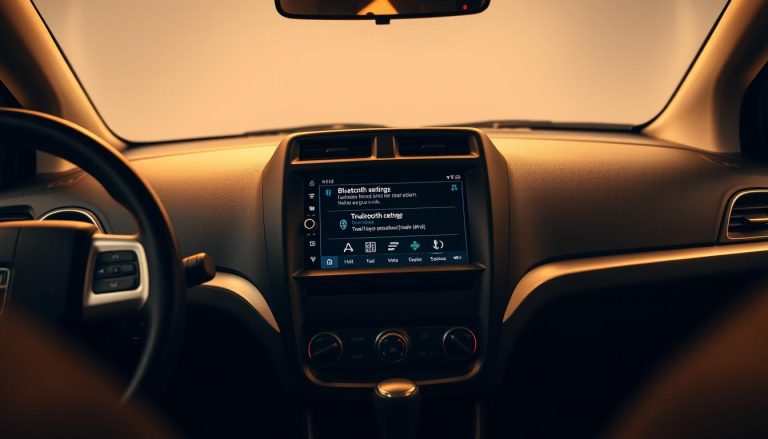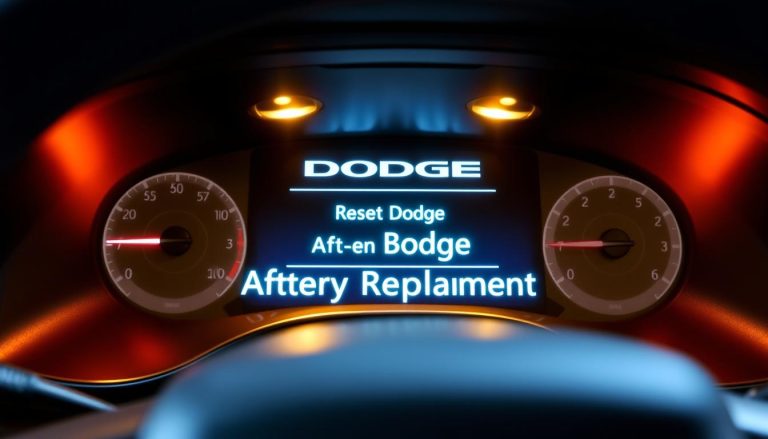The Dodge Charger, an emblematic American muscle car, boasts a storied past that spans multiple decades. Notwithstanding, certain model years have been marred by reliability issues and technical problems, rendering it imperative for prospective buyers to be cognizant of these challenges.
Grasping the historical trajectory and evolution of this formidable vehicle is paramount in pinpointing the problematic model years. By scrutinizing the reliability and prevalent issues tied to various Dodge Charger models, buyers can navigate the complexities of purchasing a used vehicle with greater acumen.
Some model years are more susceptible to issues than others, and being apprised of these can avert potential headaches in the future.
Key Takeaways
- Certain Dodge Charger model years are more reliable than others.
- Common problems can vary significantly across different model years.
- Researching the history and reliability of a Dodge Charger is crucial before making a purchase.
- Some model years are more prone to technical issues than others.
- Understanding these factors can help buyers make a more informed decision.
The Evolution of the Dodge Charger
Since its inception in 1966, the Dodge Charger has undergone a metamorphosis, transitioning from a quintessential muscle car to a contemporary sport sedan. This transformation is pivotal in discerning which models to eschew.
From Muscle Car Origins to Modern Sport Sedan
The Dodge Charger was first introduced as a fastback variant of the Dodge Coronet, encapsulating the essence of American muscle cars. Through the years, it has metamorphosed into a high-performance sport sedan, integrating cutting-edge technology and design innovations.
Key Generations and Platform Changes
The Dodge Charger has traversed through several generations, each marked by substantial platform transformations. The pivotal eras include the initial models (1966-1978), the reinvigorated versions (1981-1987, 2006-present), and the contemporary iterations (2011-present).
| Generation | Years | Notable Features |
|---|---|---|
| First Generation | 1966-1967 | Fastback design, 383 cubic inch V8 engine |
| Modern Generation | 2006-Present | Advanced safety features, powerful engine options |

Understanding Common Issues in Problematic Charger Models
Certain model years of the Dodge Charger have been associated with a range of issues, from engine failures to electrical glitches. These problems can significantly impact the ownership experience, leading to costly repairs and potential safety concerns.
Engine and Powertrain Failures
Engine and powertrain failures are among the most significant issues affecting certain Dodge Charger models. Common problems include engine oil consumption, faulty timing chains, and transmission failures. These issues can lead to decreased performance, increased repair costs, and in some cases, complete engine failure.
- Excessive oil consumption
- Faulty timing chain tensioners
- Transmission slipping or failure
Electrical and Interior Quality Problems
Besides engine and powertrain issues, some Dodge Charger models have been plagued by electrical and interior quality problems. These can range from faulty infotainment systems to issues with the vehicle’s electrical architecture. Common complaints include malfunctioning touchscreens, erratic dashboard lighting, and premature wear of interior components.

The 2006 Dodge Charger: First-Year Production Problems
The 2006 Dodge Charger, marking the inaugural year of the fourth-generation model, was beset by a multitude of issues. These challenges underscore the inherent risks associated with the launch of a new generation, where production problems often necessitate subsequent model revisions. Such hurdles are a common occurrence within the automotive sector.
5.7L HEMI Engine Failures and Oil Consumption
The 5.7L HEMI engine, a cornerstone of the 2006 Dodge Charger, exhibited a high failure rate and excessive oil consumption. This predicament was not only a source of frustration for owners but also incurred substantial repair costs. The root causes of these failures were attributed to manufacturing defects and design shortcomings, which were later addressed.
Excessive oil consumption further complicated matters, with numerous owners experiencing rapid oil depletion. This necessitated frequent oil top-ups, posing a significant maintenance burden and casting doubt on the engine’s durability.
Transmission and Electronic Control Module Issues
The 2006 Dodge Charger also grappled with transmission-related problems. Owners reported instances of gear slipping or hesitation, often linked to faulty solenoids or software malfunctions. The electronic control module (ECM) was another source of trouble, sometimes leading to erratic engine behavior or communication breakdowns with other vehicle systems.
These issues, though significant, represented a critical phase in the development of both Dodge and its clientele. Recognizing these challenges can empower potential buyers to make more informed decisions when contemplating a used 2006 Dodge Charger.
2007-2008 Dodge Charger: Continuing Reliability Concerns
The 2007-2008 Dodge Charger years were marked by significant reliability issues, including electrical system failures.
One of the major concerns with these models was the widespread electrical system failures. Issues such as faulty wiring, malfunctioning dashboard lights, and problems with the vehicle’s computer system were common. These electrical glitches not only caused inconvenience but also posed safety risks.
Widespread Electrical System Failures
The electrical system problems in the 2007-2008 Dodge Charger were multifaceted. Faulty wiring and malfunctioning sensors were among the top complaints. These issues often led to more significant problems, such as engine stalls and failure of critical safety features.
Interior Component Degradation and Climate Control Problems
In addition to electrical issues, the 2007-2008 Dodge Charger models suffered from interior component degradation. Problems with the climate control system, such as faulty heaters and air conditioning units, were frequently reported. The degradation of interior components, including dashboard trim and seat materials, further detracted from the overall driving experience.
These reliability concerns highlight the importance of thorough research and inspection when considering the purchase of a used Dodge Charger from these model years.
The 2011-2012 Chargers: Redesign Complications
The 2011 and 2012 Dodge Charger redesigns precipitated unforeseen issues, impacting the models’ reliability and performance. The intention was to modernize the Charger’s aesthetic, yet this endeavor inadvertently introduced a plethora of problems for owners.
Pentastar V6 Engine Cylinder Head Failures
The Pentastar V6 engine’s introduction in the 2011-2012 Dodge Charger garnered initial enthusiasm. Yet, it soon became evident that this engine was susceptible to cylinder head failures. “The Pentastar V6 engine’s cylinder head issues were a significant concern, leading to costly repairs for many owners.” These problems were attributed to design flaws and manufacturing defects, underscoring the necessity for enhanced quality control measures.
Transmission Shifting Problems and Software Issues
Transmission shifting issues were prevalent in the 2011-2012 Charger models. Owners encountered hesitation and rough shifting, often due to software glitches rather than mechanical malfunctions. “Software updates were frequently required to address these issues, underscoring the complexity of modern automotive technology.” The transmission’s performance was also impacted by the engine’s torque output, resulting in an inconsistent driving experience.
Reports from automotive forums and reviews indicate that the 2011-2012 Dodge Charger’s redesign complications generated a substantial number of complaints regarding its reliability and performance.
“The 2011 Dodge Charger was a step backward in terms of reliability,” noted one automotive critic, highlighting the challenges faced by Dodge in this redesign.
2014 Dodge Charger: A Year Plagued with Technical Issues
The 2014 Dodge Charger was beset by a plethora of technical maladies, significantly impacting its performance and reliability. This model year was notably challenging, with a plethora of complaints lodged against its various systems.
Alternator and Electrical System Failures
The 2014 Dodge Charger was beset by a plethora of alternator and electrical system failures. These malfunctions often necessitated costly repairs and left many owners in a state of limbo. The alternator failures, in particular, were a common grievance, with numerous owners reporting stalling or failure to start due to electrical system malfunctions.
Reported issues included faulty voltage regulators, defective battery sensors, and wiring malfunctions. These electrical system failures not only caused inconvenience but also posed a safety risk, as they could lead to a loss of critical vehicle functions while driving.
| Issue | Frequency | Cost to Repair |
|---|---|---|
| Alternator Failure | High | $500-$1000 |
| Electrical System Malfunction | Medium | $200-$500 |
| Wiring Issues | Low | $100-$300 |
Fuel System and Engine Performance Problems
In addition to electrical issues, the 2014 Dodge Charger also faced fuel system and engine performance problems. These issues manifested as decreased fuel efficiency, engine hesitation, and in some cases, engine stalling. The fuel system problems were often attributed to faulty fuel injectors, clogged fuel filters, or malfunctioning fuel pumps.
Engine performance issues were also a concern, with some owners reporting decreased power output and rough idling. These problems were often related to issues with the engine’s cylinder heads, valve train, or piston rings.
Dodge Charger Years to Avoid: Expert Analysis and Data
In the context of acquiring a Dodge Charger, it is imperative to recognize the model years that should be circumvented due to reliability issues. Expert analysis and data from esteemed sources offer crucial insights into the reliability and performance of Dodge Charger models across various years.
Consumer Reports and JD Power Reliability Ratings
Consumer Reports and JD Power are paramount in the realm of reliability and satisfaction ratings. Their data reveals that specific Dodge Charger model years are more prone to issues than others.
- The 2006 Dodge Charger was marred by problems with its 5.7L HEMI engine, including failures and excessive oil consumption.
- The 2011-2012 Chargers faced challenges with the Pentastar V6 engine, notably cylinder head failures.
- Consumer Reports and JD Power ratings indicate that these model years received significantly lower reliability and satisfaction ratings compared to others.
These ratings are derived from data compiled from thousands of vehicle owners, offering a comprehensive perspective on Dodge Charger reliability and performance across different model years.
NHTSA Complaints and Recall Information
The National Highway Traffic Safety Administration (NHTSA) serves as a critical source of information, providing data on complaints filed by vehicle owners and recall notices issued by manufacturers.
Key findings from NHTSA data include:
- Widespread electrical system failures in the 2007-2008 Dodge Charger models.
- A significant number of complaints regarding transmission shifting problems in the 2011-2012 Chargers.
- Multiple recalls issued for various model years, including the 2014 Dodge Charger, due to issues such as faulty alternators and fuel system problems.
By examining NHTSA complaints and recall information, potential buyers can gain a better understanding of the potential risks associated with certain Dodge Charger model years.
Most Reliable Dodge Charger Years to Consider
In the quest for a dependable Dodge Charger, specific model years emerge as exemplary. These years have transcended the common pitfalls, showcasing marked enhancements in both reliability and performance. The Dodge Charger’s evolution is evident, with certain model years proving more steadfast than others.
2015-2016 and 2018-2019 Models: Highlights and Improvements
The 2015-2016 Dodge Charger models signify a significant leap in reliability, attributed to enhancements in engine and transmission systems. These iterations benefited from refinements in the Pentastar V6 engine, mitigating the cylinder head failure issues prevalent in earlier models. The 2018-2019 models further solidified this trend, introducing improvements to electrical and infotainment systems, elevating their status as reliable options for consumers.
Performance vs. Reliability: Finding the Sweet Spot
The quest for a Dodge Charger that harmonizes performance with reliability poses a formidable challenge. The high-performance variants, such as the Charger SRT Hellcat, deliver unparalleled power but may compromise on reliability. In contrast, more conservative trims may prioritize reliability but fall short in satisfying the performance enthusiast’s cravings. The 2018-2019 models are noteworthy for striking a balance, offering potent performance options alongside a reassuring level of reliability for everyday use.
Conclusively, the most reliable Dodge Charger years are those that have undergone substantial updates and refinements. This makes the 2015-2016 and 2018-2019 models the most reliable choices.
Common Repair Costs for Problematic Charger Years
Acquiring a used Dodge Charger necessitates a thorough examination of potential repair expenditures. Certain model years are afflicted with specific maladies, resulting in substantial repair bills. This knowledge empowers buyers to make more astute decisions regarding their acquisition.
Engine and Transmission Repair Expenses
Engine and transmission malfunctions represent a significant financial burden for Dodge Charger proprietors. For example, the 2006 Dodge Charger, equipped with a 5.7L HEMI engine, is susceptible to engine failures, a repair or replacement of which can incur costs between $2,000 to $3,000. Transmission problems in models spanning from 2011 to 2012 can necessitate expenditures ranging from $1,500 to $2,500.
| Model Year | Issue | Repair Cost |
|---|---|---|
| 2006 | Engine Failure | $2,000 – $3,000 |
| 2011-2012 | Transmission Issues | $1,500 – $2,500 |
Electrical System and Interior Component Replacement Costs
Electrical system failures and degradation of interior components are prevalent in specific Dodge Charger models. For instance, the 2007-2008 models frequently encounter electrical system malfunctions, with repair costs ranging from $500 to $1,000. Replacement of interior components, such as dashboard trim and infotainment systems, can incur expenses between $300 to $800.
Grasping these potential repair costs is essential for buyers and owners to anticipate the financial ramifications of Dodge Charger ownership, notably for models plagued by reliability issues.
Used Dodge Charger Buying Guide: Inspection Checklist
Thoroughly inspecting a used Dodge Charger is essential to assess its condition and prevent unforeseen expenses. A detailed evaluation is imperative when contemplating the acquisition of a pre-owned Dodge Charger.
Critical Mechanical Systems to Evaluate
The mechanical integrity of a used Dodge Charger is of utmost importance. Begin by examining the engine for any signs of leakage or excessive wear. Pay attention to any unusual noises during startup and operation. The transmission should exhibit smooth gear transitions without hesitation or jerking.
Test the vehicle’s performance on various road surfaces to evaluate its overall drivability. Inspect the brakes for wear and ensure they function correctly. The suspension should be free from damage or excessive play, impacting the vehicle’s handling and safety.
The condition of the tires is also crucial; uneven wear can indicate alignment issues or other problems.
Documentation, Service History, and Red Flags
Reviewing the service history is a critical step in the buying process. Obtain records of regular maintenance and any repairs. A well-documented service history can provide insights into the vehicle’s condition and help identify any potential issues.
Be cautious of red flags such as multiple owners in a short period, significant mileage, or a history of major repairs. Check the vehicle’s title for any salvage or rebuilt designations, which can impact its value and reliability. Utilize services like Carfax or AutoCheck to obtain a detailed report on the vehicle’s history.
By adhering to this inspection checklist and meticulously reviewing the vehicle’s documentation and service history, buyers can make a more informed decision when purchasing a used Dodge Charger.
Conclusion: Making an Informed Dodge Charger Purchase
Engaging in the acquisition of a pre-owned Dodge Charger necessitates a profound comprehension of its historical context and potential malfunctions. A meticulous examination of the prevalent issues within particular model years, coupled with adherence to our exhaustive guide, empowers buyers to make a well-informed decision. This approach effectively mitigates the risk of encountering unforeseen expenses in the future.
The reliability of the Dodge Charger exhibits considerable variability across different model years. Notably, the period spanning from 2016 to 2021 is characterized by a higher degree of dependability, whereas the early 2000s models are marred by more pronounced mechanical irregularities. An awareness of these disparities is paramount for any prospective buyer seeking to navigate the complexities of a Dodge Charger purchase guide.
For a purchase to be both informed and successful, it is imperative to scrutinize the vehicle’s maintenance history, conduct a thorough inspection of its critical mechanical components, and meticulously review all documentation and service records. By adopting these measures, buyers can confidently embark on their journey, securing a Dodge Charger that not only fulfills their expectations but also promises longevity and reliability.
FAQ
What are the most common problems with the Dodge Charger?
The Dodge Charger has encountered prevalent issues, including engine and powertrain malfunctions, electrical system failures, and interior quality concerns. These problems are notably prevalent in specific model years, such as 2006, 2007, 2008, 2011, 2012, and 2014.
Are there any specific Dodge Charger model years that I should avoid?
Yes, certain model years, including 2006, 2007, 2008, 2011, 2012, and 2014, are marred by reliability concerns and technical issues. These issues encompass engine failures, transmission problems, and electrical system malfunctions.
What are the most reliable Dodge Charger years?
The 2015-2016 and 2018-2019 Dodge Charger models have demonstrated notable improvements in reliability and performance. These years are recommended as viable options.
How much do repairs cost for problematic Dodge Charger years?
Repair costs for problematic Dodge Charger years can fluctuate. Engine and transmission repairs are often costly, with prices ranging from hundreds to thousands of dollars. Electrical system and interior component replacements also contribute to overall expenses.
What should I look for when buying a used Dodge Charger?
When purchasing a used Dodge Charger, a comprehensive inspection is imperative. This should involve reviewing critical mechanical systems, documentation, and service history. Identifying potential red flags is crucial to avoid acquiring a problematic vehicle.
Are there any resources available to help me research the reliability of a Dodge Charger?
Yes, several resources are available for researching Dodge Charger reliability. Consumer Reports, JD Power reliability ratings, and NHTSA complaints and recall information offer valuable insights into potential issues with Dodge Chargers.
Can I still get a good deal on a Dodge Charger with reliability concerns?
While finding a Dodge Charger with reliability concerns at a good price is possible, it is essential to weigh the potential risks and repair costs. This careful consideration is vital before making a purchase.


